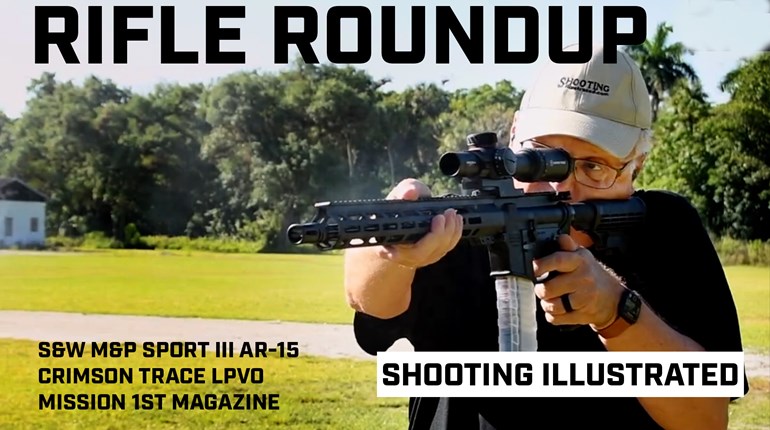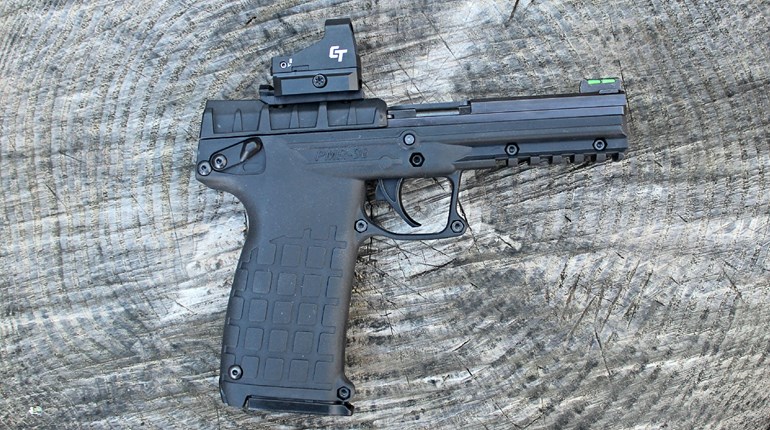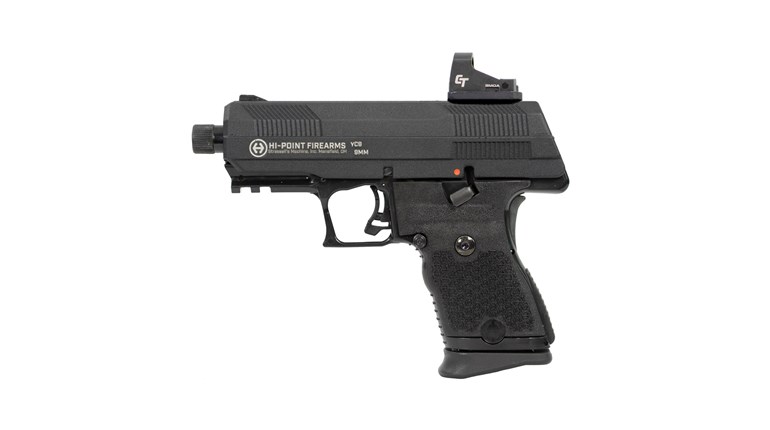
In today's jargon, going green means helping the environment by offering a product that cleans oil off of baby seals, or something. This is somewhat of a misuse of the word green, as turning a cuddly Harp seal an emerald hue would probably be bad for the pinniped.
In the firearms industry, however, going green can actually mean…going green. Every major manufacturer of laser sights is now offering at least one model with a green beam. Why? Well, the benefits of a green laser over a traditional red version include the human eye's natural ability to see green better than red, making the sight easier to acquire on a target in any light condition. But, manufacturers caution that green lasers have disadvantages, too.

Green lasers appear brighter because the human eye is more sensitive to the shorter wavelength of green light than those produced at the red end of the spectrum. Getting the green light is the hard part, according to Crimson Trace Senior Product Design Engineer Jon Rievley. "A green laser basically starts out like a red laser, except it starts with an infrared, invisible laser at with a wavelength of 808 nanometers (nm). That light is then shined into a secondary crystal laser yielding a wavelength of 1,066 nm. Finally, that laser is shined through a frequency doubler, which changes it back down to roughly 532 nm," he said. "That wavelength is easier to see, but harder to achieve. Instead of a single process to get a single laser, it takes three steps, more space and 10-times more energy to produce."
Moreover, green lasers have temperature limitations brought about by the 808 nm diode's tendency to change wavelength with temperature variations. "When the wavelength changes, the secondary crystal can't convert it as readily and may only convert 50 percent of the input to 1,066 nm," Rievley said. "Thermal expansion and contraction of the secondary crystal's length is the primary obstacle at temperatures outside of 50- to 90-degrees Fahrenheit." Rievley stressed that Crimson Trace's green lasers outperform these temperature intervals, but still have a narrower window than the company's red models.

According to LaserLyte Vice President Aaron Moore, while green lasers are bright enough to see with the naked eye at 100 yards and can illuminate areas like doorknobs and light switches in the dark, their manufacture is far more difficult. "The difference between red and green technology is akin to the difference between a magnifying glass and a telescope," he said. "Green lasers require more space and are vastly more complicated. Therefore, they are also more expensive to produce. Green lasers lack the economy of scale of red lasers. CD and DVD players use red-laser modules, so they are mass-produced and have had about 30 years of research and development behind them. Green lasers do not have that kind of backing from outside the shooting industry, but future rear-projection TVs and micro-projectors will have a green laser, which might help reduce both the size and cost of the technology."
Moore added that the future of laser-sighting devices might be even more interesting: "Blu-Ray players use a blue laser. This will probably be the next advance in laser sights, as the infrastructure is growing, but we are not yet to the point where blue laser sights are a viable option." Blue laser sights remain in their infancy, as the primary purpose of blue laser modules remains data storage such as that offered by Blu-Ray.
If Moore's prediction comes true, however, we won't have to worry about confusing the precise placement of shots with Al Gore's raison d'être, so here's hoping he's right.





































